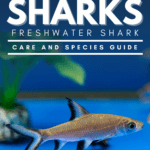Many people assume that the Bala Shark is best left to experienced fishkeepers. Decades of movie-watching have created a misconception that all sharks are aggressive fish that will nip your fingers off if you put them in your tank. However, Bala Sharks are a peaceful species that is extremely popular in the aquarium trade due partly to their unique appearance and calm demeanor.
In this article, we’ll look at everything there is to know about bala sharks. How much space should you allocate to these active fish? Can they get along with other fish species? What do they eat? And will they nip your fingers off? The answer to that last question is a definitive no, but we’ll also answer every other question in this in-depth article!
Characteristics/Appearance/LifeSpan
Common Name (species)
Bala Sharks, Bala Shark, Silver Shark, Tri-Color Minnow, Sharkminnow (Balantiocheilus melanopterus)
Family
Minnows and Carp
Origin
Malay Peninsula, Sumatra, Borneo
Diet
Omnivorous
Care Level
Easy to Intermediate
Lifespan
Up to 10 years
Activity
Shoaling
Temperament
Gentle, Timid
Tank Level
Bottom Dwellers
Minimum Tank Size
150 gallon
Temperature Range
72 to 82 degrees Fahrenheit
Water Hardness
5.0-12.0 dG (Soft-to-Medium)
pH Range
6.0 to 8.0
Filtration/Flow Rate
Rapid
Breeding
Egg layer
Compatibility
Gets along with similarly sized community fish. Avoid small fish
OK, for Planted Tanks?
Generally OK for planted tanks
Activity Level/Temperament
Here’s a fun little factoid: Bala sharks are not, in fact, true sharks. They are merely named as such due to their uncanny resemblance to their namesake. In reality, they belong to a family of fishes known as carps and minnows. Far from being the aggressive fish species many mistake them for, these gentle giants are more closely related to the common goldfish!
Like most gentle fish, bala sharks tend to feel more at ease when they are kept in groups or schools. It is in their nature to explore their surroundings next to a group of their fishy friends, making these schools quite a glorious sight to behold! The fact that these are active shoaling fish also means they’ll breathe a lot of life into your fish tanks, which is a glorious perk!
Like all types of fish, bala sharks need proper care to thrive in their surroundings. Treat these fish with respect and provide them with clean, well-maintained tanks – this will bring out the best in their personalities!
Compatibility/Mates
Although bala sharks are extremely docile as far as aquarium fish go, they still need to be kept with other decent-sized fish. Because of their immense potential size, it is best to keep bala sharks away from tiny fish. Species such as neon tetras may be great in most community tanks, but will likely turn into a tasty snack for a hungry bala shark.
Thankfully, there are a variety of fish species that make excellent companions for the bala shark. In general, you should opt for tropical fish species that grow to at least 4 inches in length. Good examples include clown loaches, boesemani rainbowfish, and angelfish. These fish are large enough to deter your bala sharks from chowing down on them, while remaining relatively peaceful.
Of course, there are also fish species you should steer clear of. Please avoid nippy fish – even if these fish don’t hurt your bala sharks in any material way, their presence will serve as a constant source of stress for these gentle giants. And of course, aggressive fish are absolute no-gos. Again, your bala sharks may be large enough to defend themselves, but they shouldn’t be put in a stressful situation to begin with.
Feeding
What to feed
Frankly speaking, Bala sharks are a joy to feed. These omnivores enjoy a wide variety of flake foods and live protein, and will be happy with pretty much anything you can find in your local fish stores!
That said, their easy-going feeding habits doesn’t mean you should feed them anything and everything. A good, nutritious diet is important to every fish, and Bala sharks are no different. What is the most important component of a healthy diet? A well-formulated dry fish food. These foods form the basis of a healthy diet, so you should look for one that’s formulated specifically for omnivores.
In addition to their dry food, Bala sharks need live protein. This can come in the form of frozen fish, brine shrimp, insect larvae, and worms. In their native habitats, they are accustomed to mosquito larvae, which is a widely available protein source in the rivers of Southeast Asia. However, captive Bala sharks will be just as happy with any of the previously mentioned live proteins.
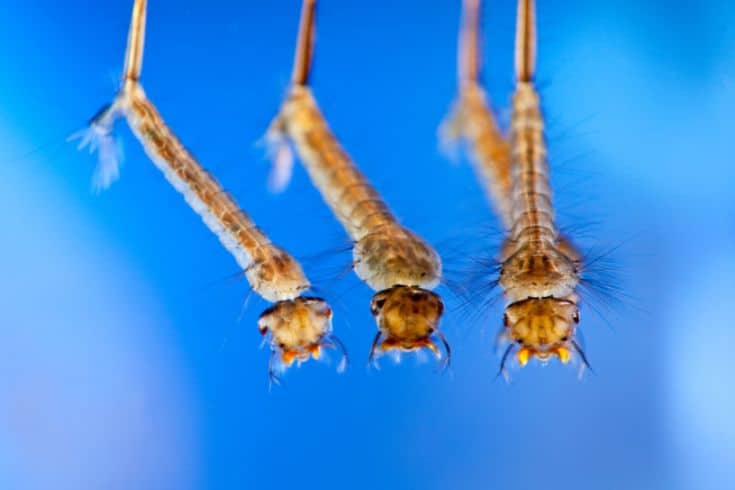
Finally, Bala sharks need a nutritious source of plant matter. Algae wafers are a great way to add plant matter to their diet, but some Bala sharks may also enjoy fresh vegetables like blanched peas or spinach. Just be sure to do your research before feeding them any unfamiliar foods – and this applies to veggies.
Feeding Frequency
Due to their large body size, it’s easy to assume that Bala sharks need lots and lots of food – the more, the merrier. However, this isn’t actually the case. Bala sharks should be fed two to three times a day, and with moderate portions. What constitutes a moderate portion? It really depends on the size of your Bala shark, but a good rule of thumb is to provide an amount of food that can be consumed in a few minutes.
Some people find an automatic fish feeder useful in maintaining a consistent feeding schedule. It makes it easier to feed your bala sharks moderately sized meals at regular intervals throughout the day, instead of all at once, which can lead to overfeeding. However, we recommend testing the feeder out first. Speaking from experience, we’ve had a few instances of the feeder malfunctioning, so please be careful!
Tank Requirements
Tank Size
Let’s get one thing straight – Bala sharks are big fish. They may be tiny when you first pick them up from the pet store, but will grow rapidly and exponentially with proper care. What does this mean for you? Well, you’ll need to invest in a larger tank to accommodate your fish when they reach their full size. Typically, we like to recommend a minimum tank size of 150 gallons.
150 gallons may seem like a huge space and financial commitment, and it is. The tank itself will cost a pretty penny, but the upkeep will outweigh this upfront investment by miles. You’d need a bigger heater, filter, and pump, all of which require energy to run. So, before you get a bala shark, please take these factors into consideration – otherwise, you may be in for a nasty awakening.
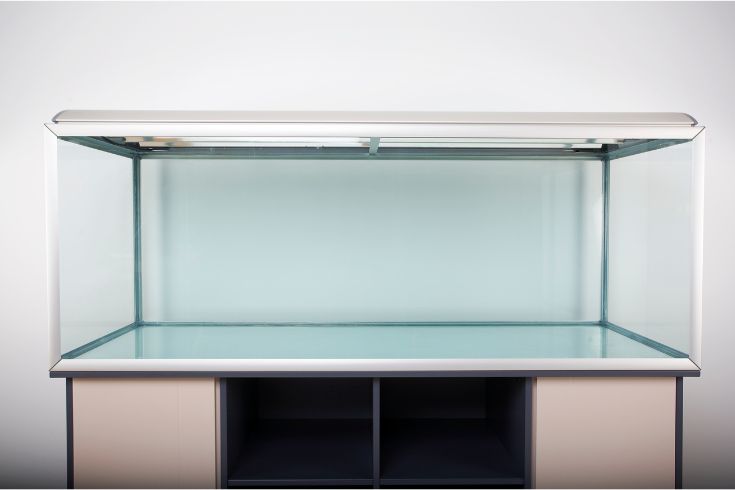
Of course, you can always opt to use a smaller tank at first, then size up as your bala shark gets larger. Personally, however, we prefer to go with the large tank right away. Bala sharks grow quickly, and replacing several smaller tanks is extremely tedious. We understand that a huge tank is daunting, but it’s also a good way to gauge if you’re truly prepared to take on the task of raising these giant fish.
Tank Set-Up
Assuming that you’ve committed to raising bala sharks, you want to make sure that your tank is set up properly. Here are a few things you’ll need:
- 150-gallon tank
- Substrate
- Filter
- Heater
- Pump
- Live plants
- Water conditioner
- Thermometer
- Test kit
- Place your 150-gallon tank on a sturdy surface. Remember – the weight of the water will add up quickly, so make sure the surface is strong enough to support the weight.
- Add substrate, live plants, and other tank decors.
- Install the filter, heater, pump, and airstone. Make sure these are working properly.
- Fill the tank with dechlorinated water, and let the tank cycle for a few weeks.
- Check that the heater, pump, and filter are all working properly. Use a thermometer to measure temperature stability and test kits to check water parameters.
- Once the tank is cycled and water parameters have stabilized, you can add your bala sharks to the tank. Make sure that every new arrival has been properly quarantined for at least two weeks.
- Monitor your bala sharks and water parameters regularly. Pay close attention to signs of illness, and take steps to correct any water issues.
With a little bit of care and dedication, your bala sharks should thrive in your tank! Just be sure to keep up with tank maintenance, and you should be all set.
Habitat Requirements
Water Requirements
Bala sharks hail from the fast-flowing rivers of Southeast Asia. Therefore, these active swimmers are most at home in freshwater tanks that replicate these water conditions.
Chief among these requirements is strong water flow, coupled with good oxygenation. The two often come hand-in-hand, as the increased water flow helps to circulate oxygen throughout the aquarium. In addition to a good filter, aquarists can add air pumps, air stones, and/or powerheads to create the desired water motion. Aquatic plants can also be added to the tank for additional oxygenation.
The tank water temperature is yet another important factor to consider when setting up a Bala shark tank. In the wild, these fish can be found in waters ranging from 72°F to 82°F. Again, you should strive to replicate these conditions – either with a good heater or by ensuring that your tank’s surroundings are not too cold. A good tank thermometer is a must, as it will help you monitor the water temperature.
In terms of pH and water hardness, Bala sharks are pretty adaptable. They’ll be perfectly content with a pH between 6.0 and 8.0 – that essentially means you can do anything from slightly acidic to slightly alkaline. They do have a preference for water that’s on the softer end of things, but will be happy with medium hardness as well. All-in-all, this is a pretty easy-going fish.
Filtration Requirements
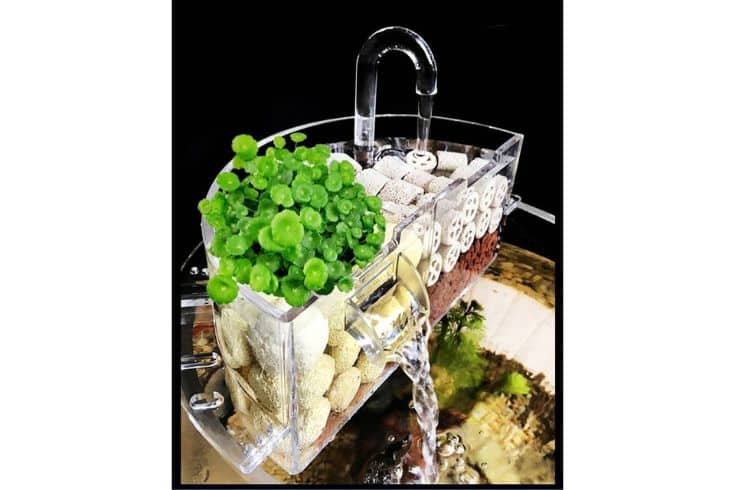
A good filter is vital in maintaining ideal tank conditions for your bala sharks. As we’ve previously mentioned, getting a filter that generates a pretty strong water flow is important, as these fish need a lot of water movement to be healthy. Additionally, you’ll want a filter that can handle a large volume of water and has a good filtration capacity. After all, these fish will be kept in 150-gallon tanks.
How should you size the filter? Well, a good rule of thumb is to opt for something with a flow rate that’s 6 times the size of your tank. For the 150-gallon tank, that means you should look for a filter that has a flow rate of 900 gallons per hour (GPH). You may need to contact the manufacturers directly to get an exact GPH rating, especially as many filters will not be able to handle this large of a tank.
Heat and Lighting Requirements
Because bala sharks hail from the tropical climate of Southeast Asia, they require warm temperatures between 72-82°F. Unless you live in a tropical climate, you will need an aquarium heater to maintain these temperatures. Make sure to opt for a heater that’s rated for the size of your bala fish tank – 150 gallons, per our minimum tank size recommendation. Features like automatic shut-offs can also be helpful. I
n terms of lighting, bala sharks don’t have any special requirements. For aesthetic purposes, you can go with a full-spectrum LED light that replicates the natural day and night cycle of their natural habitat. Given the depth of the average bala shark tank, you’ll want to ensure that the light rays reach the floor of your tank, where some plants may be located. Do your research before making any purchases!
Plants and Decorations
When it comes to plants and decor, bala sharks aren’t too fussy. You should prioritize functionality and practicality in your decor choices. For instance, include a few plants to help keep the water clean, such as live plants like Java ferns, Anubias, or Vallisneria. Make sure these plants are properly anchored to the substrate, as bala sharks are active swimmers that may uproot them.
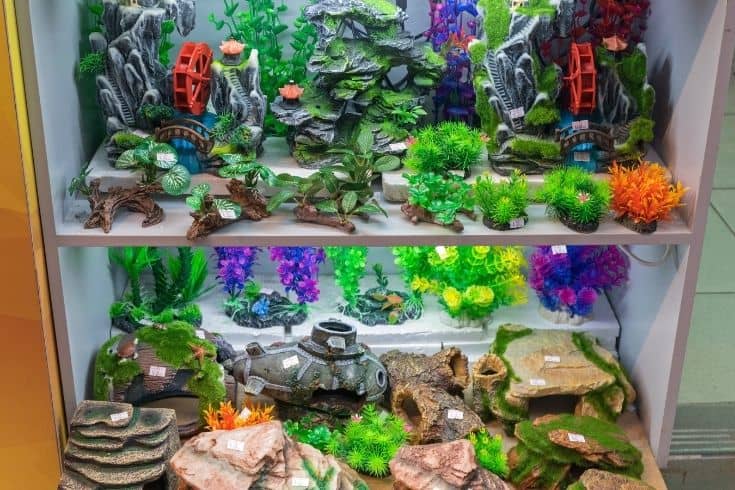
You can also add other decorations like driftwood, rocks, and caves. These can provide visual interest and places for your bala shark to hide and explore. Make sure the decorations are securely placed and won’t topple over if your bala shark bumps into them.
Finally, if you want to add a bit of color and texture to your aquarium, consider adding plastic plants, artificial rocks, and other decorations. Just be sure to choose items that are safe for aquarium use, as some may contain toxic chemicals that can harm your fish.
Common Health Issues
Health Issue
Ich (White Spot Disease)
Symptoms or Causes
Ich is a very common disease that’s caused by an aquatic protozoan parasite.
Fish infected with Ich develop a sprinkling of tiny white spots on their fins, gill covers, and bodies. They also flash against the gravel and other solid objects in the aquarium.
Suggested Action
Raise the water temperature to 82o F for three days. Use an OTC White Spot Disease medication to treat the tank.
Health Issue
Flukes
Symptoms or Causes
Flukes is the term used to describe various types of external fish parasites. These macroparasites can often be seen with the naked eye attached to the fish’s skin or gills.
Suggested Action
Treat the fish tank with an OTC antiparasitic medication.
Health Issue
Fungal infections
Symptoms or Causes
White fluffy growths on the fish’s body, mouth, and head.
Suggested Action
Quarantine infected fish, and treat with an antifungal medication.
Health Issue
Bacterial infections
Symptoms or Causes
Sores and ulcers on the body and head, ragged, bloody fins.
Suggested Action
Treat the tank with OTC antibacterial treatment.
Breeding
Bala sharks are some of the most difficult fish to breed, as they take a while to reach sexual maturity. It is also difficult to distinguish between males and females, as the differences can be quite subtle. However, it is still possible to breed them in home aquariums. Here’s a quick overview on how to do so.
1. Observe your Bala sharks for signs of dancing, as this is an indication that they are ready to breed.
2. Isolate the dancing pair and place them in a 60-gallon breeding tank. Make sure that the water parameters are stable and pristine.
3. After several rounds of dancing, the female fish scatters her eggs around the floor of the tank.
4. The male will then fertilize the eggs by releasing his milt over the eggs.
5. After the eggs have been fertilized, the parents leave the eggs alone. Bala sharks do not protect their young, so it is important to remove the parents from the tank.
6. Once the eggs hatch, feed the baby Bala sharks with a specialized fry food and pay close attention to their development.
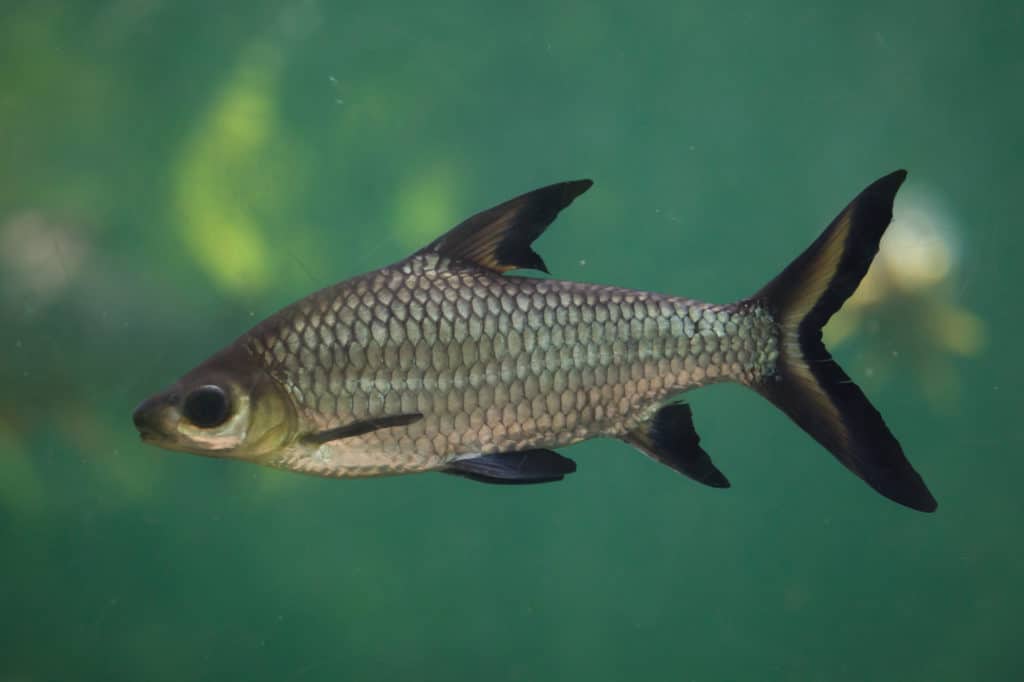
And there you have it! With patience and dedication, you can successfully breed Bala sharks in your home aquarium.
Product Recommendations
- Best Tank: SC Aquariums 150-gallons Starfire Glass Aquarium
- Best Heater: AQQA 1200 Watt Submersible Heater
- Best Food: Aqueon Bottom Feeder Tablets
Final Thoughts
We hope this care guide gave you some insight on how to care for bala sharks! These gentle giants lend a certain peacefulness to any freshwater aquarium, and we are certain you will enjoy their presence. Just be sure to provide enough space, feed them a good, nutritious diet, and take good care of their tanks! You’ll be rewarded with a healthy, happy aquarium filled with beautiful bala sharks!
Did you find this care guide helpful? Please share it with someone who might appreciate it! Thanks for reading, and good luck with your bala sharks!
